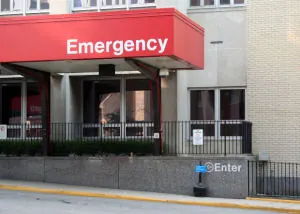
Major Crash Involving Big Rigs Shuts Down Capital City Freeway
Major Crash Involving Big Rigs Shuts Down Capital City Freeway A major crash involving big rigs early Friday morning shut down the southbound lanes of…


Major Crash Involving Big Rigs Shuts Down Capital City Freeway A major crash involving big rigs early Friday morning shut down the southbound lanes of…

Truck Accident Reconstruction Testimony Establishing liability in a commercial truck accident case is not always straightforward and may require testimony from a crash reconstruction expert….

One Injured in Three-Vehicle Crash One person was injured in a three-vehicle crash along Interstate 5 in Sacramento on April 6, 2018, according to a…

Tow Truck Driver Injured on Route 50 I’m Ed Smith, a Sacramento truck accident attorney. The driver of a wrecker who had stopped to help…

Deadly Yolo Causeway Crash One person was tragically killed and two others seriously hurt on September 26, 2016 after a series of crashes that caused two…

Truck Driver Fatigue Accidents When a truck driver is operating a large commercial truck while tired or fatigued it is extremely dangerous and can…

South Sacramento Hay Truck Fire I’m Ed Smith, a Sacramento Personal Injury Lawyer. Many of us were caught up in the aftermath of a crash…

Rancho Cordova Big Rig Crash Rancho Cordova Big Rig Crash I’m Ed Smith, a Rancho Cordova trucking injury lawyer. Commuters travelling on westbound Highway 50…

Sacramento Big Rig Crash Sacramento Big Rig Crash I’m Ed Smith, a Sacramento trucking accident lawyer. A big rig crash involving multiple vehicles proved to…

Prehospital and Hospital Evaluation of Chest Trauma I’m Ed Smith, a Sacramento Trucking Accident Lawyer. While still in the field, the most that emergency medical…

Southbound Highway 5 Closed I’m Ed Smith, a Sacramento Car Accident Lawyer. Southbound Highway 5 closed today near Seamus Avenue in Sacramento. This is an…

Sacramento Truck Accident at Sutterville Road – Highway 5 On Monday, December 21, 2015, during the early morning hours, a big rig crashed while on…

Flatbed truck crash I’m Ed Smith, a Sacramento Trucking Accident Attorney. Flatbed trucks are large vehicles used mainly for commercial reasons. Flatbed trucks have a…

Big Rig Versus Motorcycle Accident Fatality On Monday, December 14, 2015 a big rig versus motorcycle accident fatality occurred on Highway 50 in Sacramento. The…

Sacramento Trucking Accident Attorney Discusses Commercial Truck Interior Video Systems: Ed Smith is a top-rated Sacramento Trucking Accident Attorney. Ed is familiar with the devastating consequences…

Tire Blowouts & Big Rig Trucks: Why they Occur A flat tire on an automobile is a scary and sometimes a dangerous incident if it…